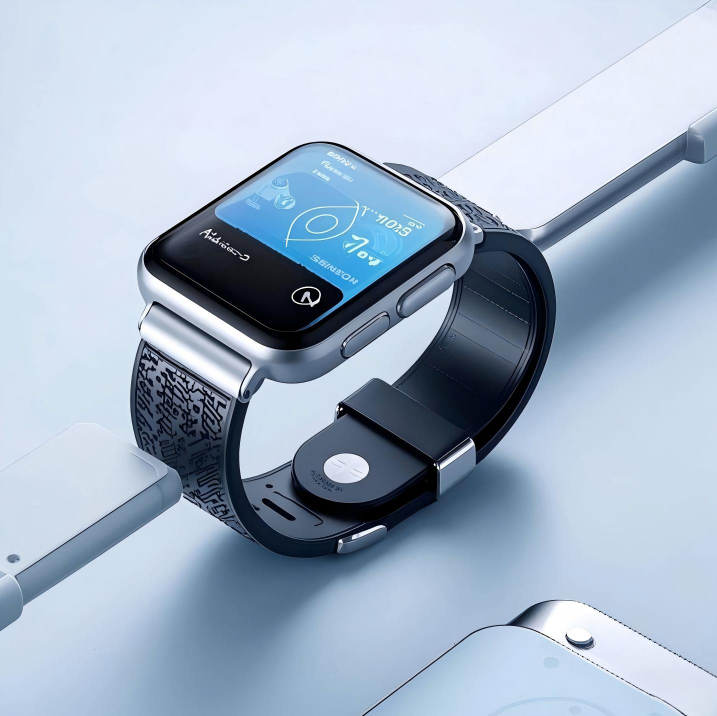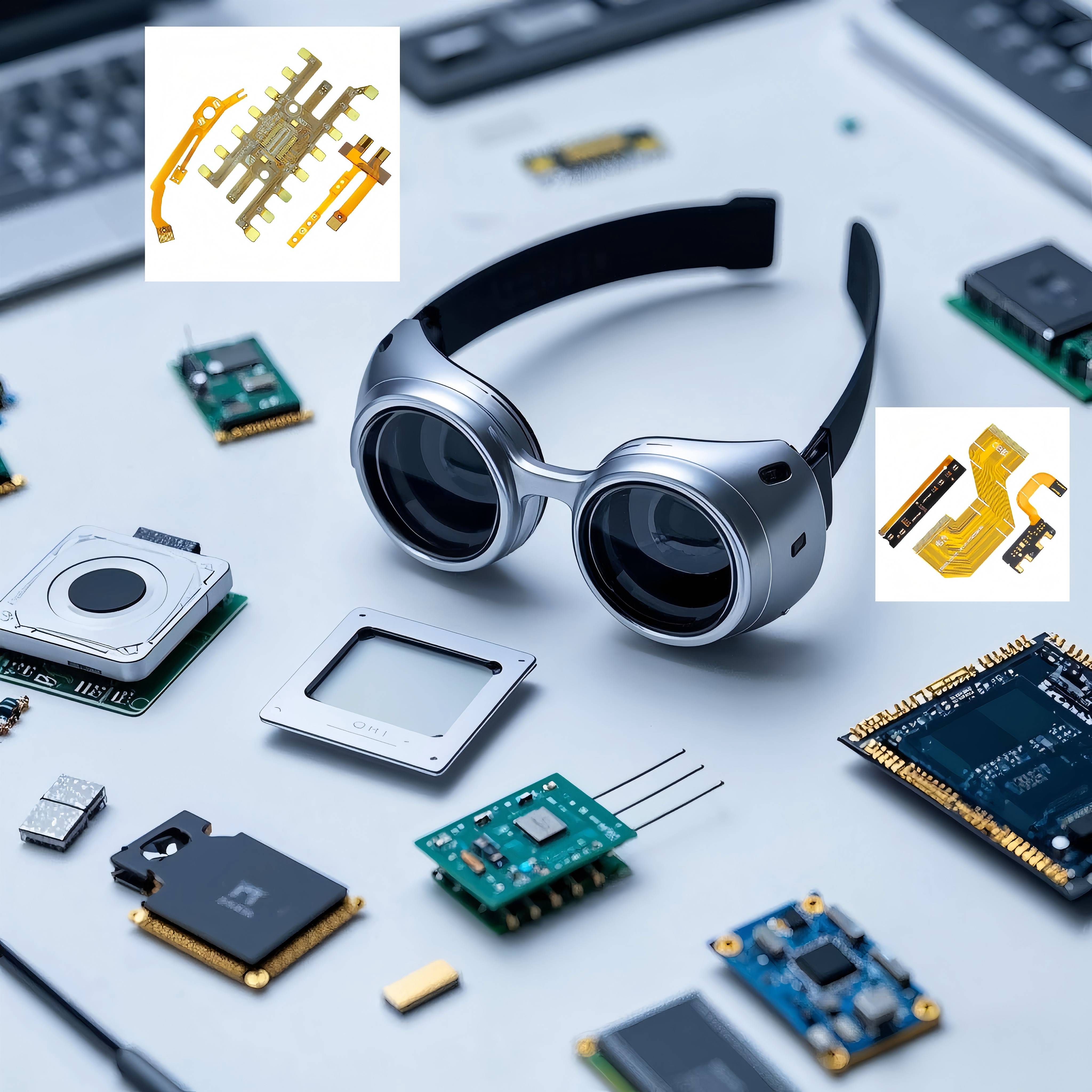Search
The Application of FPC in the Smart Wearables Field
- Feb 17,2025
-
Share
In the rapidly evolving panorama of emerging products, the smart wearables sector, encompassing smartwatches, smart glasses, and other devices, is burgeoning. These gadgets have become an indispensable part of modern living, with consumers craving for more advanced features, sleeker aesthetics, and enhanced comfort. Consequently, the demand for Flexible Printed Circuits (FPCs) in this domain is on an unceasing upward trajectory.
FPCs are the linchpin in smart wearables. They are the critical components enabling these devices to achieve their signature slim profiles and flexible configurations. For smartwatches, multi - layer FPCs with high - density interconnect (HDI) capabilities are employed to link the display, sensors like MEMS (Micro - Electro - Mechanical Systems) - based heart rate monitors and accelerometers, and the central processing unit. The pliability of FPCs, attributed to their flexible copper clad laminates (FCCLs) and advanced coverlay materials, allows for their neat integration within the compact and often curved body of the smartwatch, ensuring a comfortable fit on the wrist. In smart glasses, FPCs with fine - pitch traces are crucial for connecting the optical elements, cameras, and audio components. Their ability to conform to the shape of the glasses frame, a result of their inherent flexibility and the use of advanced manufacturing processes such as roll - to - roll (R2R) production, ensures a seamless and lightweight design.

![]()
Shenzhen Huaruixin Electronics Co., Ltd.'s Strategies
1. Technological Innovation
Shenzhen Huaruixin Electronics Co., Ltd. channels substantial resources into R & D to stay abreast of the smart wearables market's demands.
Advanced Material Research: The company is perpetually exploring novel materials for FPC fabrication. For instance, it is delving into the development of liquid crystal polymer (LCP) and polytetrafluoroethylene (PTFE) - based substrates. These materials offer superior electrical properties, including a low dielectric constant and dissipation factor, which are essential for high - speed signal transmission. Moreover, they can further reduce the thickness of FPCs, making smart wearables even more lightweight. Additionally, research on self - healing materials for FPCs is underway, aiming to enhance the product's durability and lifespan.
Process Optimization: Huaruixin focuses on refining manufacturing processes. It is adopting cutting - edge techniques such as laser direct imaging (LDI) for creating ultra - fine circuit traces. LDI enables the production of FPCs with minuscule line and space dimensions, thereby increasing the circuit density and improving the overall performance of FPCs in terms of signal integrity and power management. The company is also exploring additive manufacturing technologies for FPCs, which can offer greater design flexibility and the ability to create complex 3D structures.
2. Custom - made Solutions
Recognizing the diverse requirements of different smart wearable manufacturers, Huaruixin proffers customized FPC solutions.
Collaborative Design Process: The company's engineering team collaborates closely with smart wearable designers from the nascent concept stage. They engage in in - depth discussions regarding the specific layout of components, power - consumption requirements, and the desired form factor of the device. Based on these consultations, they design FPCs with optimized layer stack - up and routing strategies, tailored to each product's unique needs.
Function - Specific Design: For smart glasses, where space is at a premium, Huaruixin designs FPCs with ultra - thin and highly flexible structures. These FPCs, often featuring flexible interconnection technology, can be effortlessly integrated into the narrow temples of the glasses, providing a reliable connection for all components. For smartwatches, FPCs are engineered to handle the high - speed data transfer between the touchscreen display and the internal processor, leveraging techniques such as differential signaling to ensure smooth user interactions.
3. Quality Control
Quality is of paramount importance for Huaruixin, especially when it comes to FPCs for smart wearables.
Advanced Testing Equipment: The company is equipped with state - of - the - art testing apparatuses. Automated optical inspection (AOI) machines with high - resolution cameras are utilized to detect any defects in the FPCs, such as open circuits, short circuits, and misaligned traces. In addition, time - domain reflectometry (TDR) and high - precision impedance analyzers are employed to ensure that the FPCs meet the stringent electrical requirements for high - speed data transfer in smart wearables. The company also uses X - ray inspection systems to detect internal defects that may not be visible on the surface.
Stringent Quality Management System: Huaruixin has instituted a comprehensive quality management system that adheres to international standards such as ISO 9001 and IPC - 6013 for FPC manufacturing. This system encompasses every phase of the production process, from raw material sourcing to the final product inspection. Regular quality audits and continuous improvement initiatives are carried out to maintain and enhance the quality of their FPCs. Statistical process control (SPC) techniques are also employed to monitor and control the production process, ensuring consistent quality.
Key Issues to Note
1. Compatibility with Miniaturized Components
In smart wearables, components are becoming increasingly miniaturized. FPCs must be fully compatible with these diminutive components. This entails ensuring proper electrical connection with micro - sized sensors and actuators. The pitch of the FPC's connection pads must precisely match the size of the component's pins. Mechanical compatibility is equally crucial. The FPCs should be able to fit into the constrained space within the device without causing any interference with other components. This may involve the use of flexible connectors and optimized mechanical design to ensure a snug fit.
2. Long - term Reliability in Wearable Environments
Smart wearables are constantly exposed to a gamut of environmental factors. They may be wetted by sweat, subjected to temperature fluctuations, or experience mechanical stress during daily use. FPCs need to be designed to be highly reliable under these conditions. This necessitates the use of waterproof and moisture - resistant materials, such as conformal coatings, as well as proper stress - relief design, including the use of bend - radius optimization and strain - relief pads, to prevent damage from bending and stretching. Additionally, materials with high thermal stability are required to withstand temperature variations.
3. Meeting the Requirements of High - Speed Data Transfer
With the increasing functionality of smart wearables, such as high - definition video streaming on smart glasses or real - time health monitoring on smartwatches, the demand for high - speed data transfer has surged significantly. FPCs must be able to support high - speed data rates without signal degradation. This involves using materials with low dielectric loss, such as LCP and PTFE, and optimizing the circuit design for better signal integrity. Techniques such as impedance matching, signal shielding, and the use of high - speed transmission lines are also crucial to ensure reliable high - speed data transfer.

![]() In conclusion, as the smart wearables market continues to expand, FPC manufacturers like Shenzhen Huaruixin Electronics Co., Ltd. are presented with abundant opportunities. By focusing on technological innovation, customized solutions, and strict quality control, while being attuned to key issues such as compatibility, reliability, and high - speed data transfer, they can more effectively meet the market's demands. We welcome new and old friends to engage in communication and discussion on these topics, with the aim of jointly exploring the future of FPCs in the smart wearables field.
In conclusion, as the smart wearables market continues to expand, FPC manufacturers like Shenzhen Huaruixin Electronics Co., Ltd. are presented with abundant opportunities. By focusing on technological innovation, customized solutions, and strict quality control, while being attuned to key issues such as compatibility, reliability, and high - speed data transfer, they can more effectively meet the market's demands. We welcome new and old friends to engage in communication and discussion on these topics, with the aim of jointly exploring the future of FPCs in the smart wearables field.

Let’s talk! We’ll provide the perfect solution for you!
-
 Huaruixin Electronics mainly produces printed circuit boards as the core business, to provide customers with one-stop solutions for FPC/PCB production, components sourcing and Assembly.
Huaruixin Electronics mainly produces printed circuit boards as the core business, to provide customers with one-stop solutions for FPC/PCB production, components sourcing and Assembly. - WHAT WE DO — PCB Design Solutions — Flex PCB Production — Components Sourcing — FPC&PCB Assembly
- PRODUCTS — Single Sided Flexible Circuits — Double Sided Flexible Circuits — Multilayer Flexible Cirucits — Rigid-Flex Circuits — FPC Assembly — PCB Assembly
- CAPABILITY — FPC Capability — Rigid-Flex Capability — PCB Capability — Assembly Capability
- Copyright © 2024 Shenzhen Huaruixin Electronics Co., Ltd. All Rights Reserved.
- Design By BONTOP


